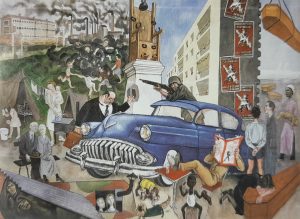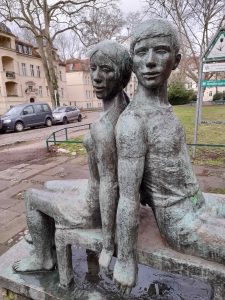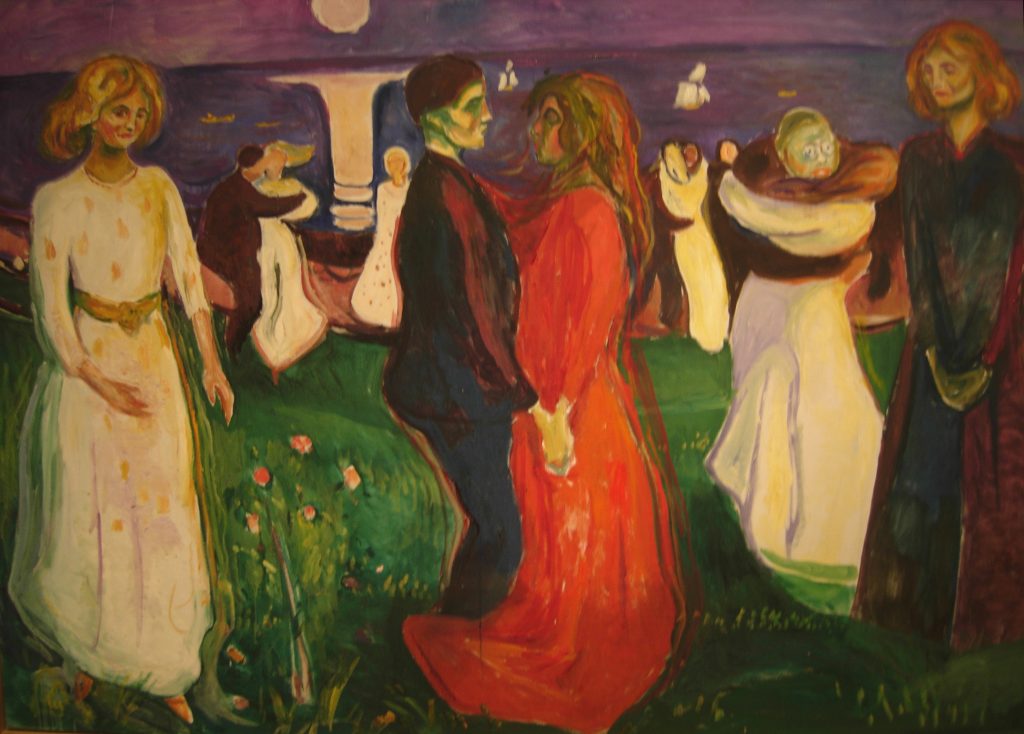
Some weeks ago in the Immonen House in Hohenschönhausen, by a casual meeting among artist colleagues, freedom was discussed. A comparison to gravitation was made. As we know from physics (and common sense), gravitation is a universal force which binds us and all other things to the earth. Gravitation makes the human dream of flying like a bird impossible.
Would we then be freer if gravitation suddenly disappeared? No, if gravitation were to disappear, there would be chaos and no one would be free to do anything. We tend to think that limitations make us unfree. But this is short-sighted, and perhaps even a reminiscent of the Middle Ages, when confines and borders were all over the place. I believe we should now recognize that some limits are good and a certain minimum even necessary.
The above-mentioned conversation about freedom proceeded into the art world. Then a sudden insight popped up in the head of one of us. She said: “In art MONEY is the gravitation force!”
“Money” is not alone
You may say this is too banal an observation to be called an insight. But I would argue that the observation is important. In the absence of other ruling principles money will slip into the vacuum and bring some order.

Moreover, I will argue that money is one of three interrelated modern (or postmodern) “values”: money, sex and power. Where other values are absent, those three rule alone. The painting by Fougeron is one of numerous examples of art displaying the grim world of money, sex and power. (Sex on the cover of the magazine!)
So, what would be the opposite of those values? Not long ago I came across the somewhat original idea that the opposite of power is not powerlessness, but love.
Love is not alone
Whereas the perspective power versus powerless inevitably leads to power struggle, suggesting love as the opposite to power points to a different way of relating. Of course, you may say, but is this helpful? If you love somebody, fine, but what has that to do with the evil powers you may sometimes have to fight (or every day)?
Let us have a look, then, at two more values which sometimes go along with love: faith and hope. I am sure you have heard of this 3er-set: faith, hope and love? In a secular context I will say that having faith is being convinced that there is such a thing as goodness. Having hope is to look for goodness, even if there is not much to see at the moment and without trying to enforce it. The latter connects to love, which by its very nature cannot be enforced anyway.
Pure love?

So, which set of values would you go for? – money, sex and power – or faith, hope and love? In any case, I think there is no such thing as pure love. Love will always mix up with other things like sex and even with money and power. In this sculpture you can see how love looks when devoid of anything else. Here you see one of the many simple sculptures from the former GDR, which you can see in parks in the eastern parts of Berlin. “Simple” is fine, but the young couple here is not only simple, they are also “empty” (too empty, in fact, to be true). The sculpture is formed in the spirit of the GDR state which monopolised power (and money). The citizens were left to go with the flow.
If you go with the flow in a stream set by others, your experience of life will, in fact, be much like floating around without gravitation. You will accept this condition only as long as you know of nothing else. Love is best when integrated into the struggle of life.
Dance of Life
The artwork of the fortnight: The Norwegian painter Eduard Munch (1863-1944) kind of sees life from a woman’s perspective.
Three phases (or positions) are identified (from left to right): the woman is alone, she is with a man and then again, she is alone.
PS: Of course, there is more to love than the erotic love between man and woman. There is love between friends and siblings and there is e. g. religious love – all worth the attention of artists. You will certainly see this theme dealt with again in coming entries.
- See also The Battle of the Sexes, Knowing about Art, Gratitude

Schreibe einen Kommentar